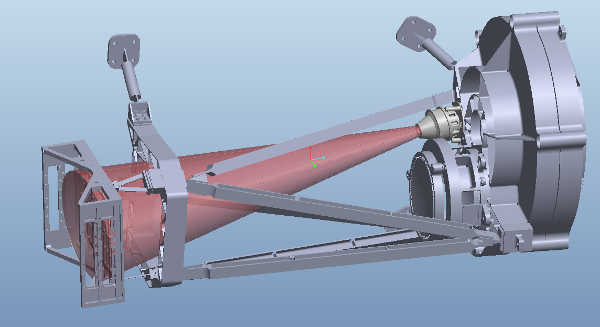MPIA's Involvement in Euclid
The Euclid satellite, and its launch, will be provided by the European Space Agency. The mission's cutting-edge scientific payload is being developed by a multi-national consortium of scientific institutes. The Euclid Scientific Consortium (EC) is lead by Yannick Mellier (IAP, France) and is composed of over a 1,200 scientists and engineers from 14 nations. The Max-Planck-Institut für Astronomie (MPIA) plays a crucial role in this consortium. MPIA currently has a six-person contribution to the Euclid Mission, four of them funded by the German Aerospace Center (DLR), and is led by Knud Jahnke:
- Felix Hormuth (Local Project Manager / Hardware Engineering)
- Knud Jahnke (Local Project Lead / NISP-P Instrument Scientist)
- Hans-Walter Rix (Euclid Board Member)
- Gregor Seidel (NISP-P Image Simulations)
- Stefanie Wachter (Euclid Calibration Working Group Lead / NISP-P Calibration Lead)
MPIA has both significant scientific and hardware contributions to the Euclid Mission, with a focus in the Near-Infrared Spectrometer and Photometer (NISP).
Hardware
MPIA has two hardware contributions to the Euclid Mission, both of them mostly funded by the German Aerospace Center (DLR).
Near-Infrared Calibration Unit
MPIA is developing the NISP Instrument's near-infrared calibration source, which is required to characterize the instrument's detectors whilst in space. The LED based concept will illuminate the detectors at 5 wavelengths within the instrument's wavelength range (920 - 2000 nm). The concept for this calibration source is currently being developed by MPIA an its industry partners.

The Calibration Unit (beige) in the NISP Instrument (grey) with the near-infrared output beam identified (red) (EC).
Near-Infrared Filters
MPIA will also provide the NISP Instruments three near-infrared (Y-, J- and H-band) filters. These high-precision optical elements are particularly challenging as, with a diameter of 130 mm, they are significantly larger than any filters that have been flown in space before.

NISP near-infrared filters, largest to ever be flown in space (130mm diameter). Three photometric bands between 0.9 and 2 micrometers. Shown are flight-like coated test samples (MPIA).